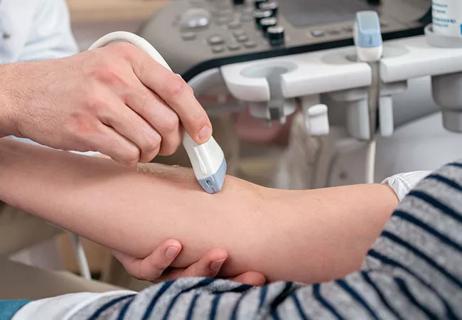Research examines diuretic use for patients treated for acute decompensated heart failure

As a nurse practitioner in the emergency department at Cleveland Clinic’s main campus, Samantha Bogner, DNP, CNP, AGACNP-BC, FNP-BC, wanted to make sure that patients treated in the ED for acute decompensated heart failure were receiving optimal diuretic therapy based on national guideline recommendations.
Advertisement
Cleveland Clinic is a non-profit academic medical center. Advertising on our site helps support our mission. We do not endorse non-Cleveland Clinic products or services. Policy
“I reviewed the guidelines and realized they were applicable to the emergency department,” says Dr. Bogner. “I thought it would be great to share content expectations and facilitate use by ED providers to help ensure that every patient was getting the same standard of care.”
She worked in collaboration with heart failure expert Nancy Albert, PhD, CCNS, CHFN, CCRN, NE-BC, FAAN, Associate Chief Nursing Officer of Nursing Research and Innovation at Cleveland Clinic, to create a clinical pathway for ED providers that emphasized assertive use of loop diuretics when patients presented with hypervolemia. The goal was to give an intravenous dose early after presentation, at a dosage that was based on an individual patient’s total daily dose prior to the ED visit.
Dr. Bogner then designed a pre- and post-evidence-based practice intervention research study with retrospective data collection to ascertain whether diuretic treatment use and dose increased and whether patient disposition from the ED varied after implementing the clinical pathway (the hope was that patients would be more likely to be transferred to a short-stay unit from the ED, rather than be admitted to the hospital) and whether patients adhered to a post-discharge visit within seven days of being discharged from the ED or hospital.
The ED team members were very open to changing practice and discussed the plan with the research team. The algorithm was posted throughout the ED as a reminder of expectations. In total, 304 patients were included as participants. The research team was disappointed with the findings. More post-intervention patients in the ED received at least one dose of loop diuretic; however, the first dose did not differ when pre- and post-intervention data were assessed, and doses administered were generally lower than doses used by patients at home and based on national guidelines.
Advertisement
“Although we were trending toward an improvement in dosing, physicians and advanced practice providers didn’t completely adhere to the printed algorithm,” says Dr. Bogner, who now works as a nurse practitioner in the EDs at Cleveland Clinic Avon Hospital at Richard E. Jacobs Campus and Fairview hospitals. “One conclusion could be that ‘old habits die hard;’ but there may be other reasons for nonadherence to the algorithm; for example, fear of over-diuresing patients and causing hypovolemia.
The ED is a challenging setting in which to implement specialty criteria and at the same time allow ED providers to make decisions independently. Research findings confirmed that the solution may not be simple. We need to focus on education and electronic medical record tools that aid in providing reminders and making the best decisions, in addition to using an evidence-based algorithm that meets national acute care heart failure guidelines.”
Advertisement
Advertisement

Overestimation of pain can escalate treatment, but underestimation can have other unintended consequences

Study highlights the benefits of clear, concise messaging

How nurses can effect change through professional writing

Fellow critical care nurses welcome additional support and expertise

Pilot study confirms feasibility of conducting additional research on the novel treatment

Study shows ultrasound can be valuable tool for improving patient satisfaction by reducing failed IV insertions

New system uses vital signs to predict need for further intervention

Findings reveal personal and professional factors that influence nurses’ interest in medical research